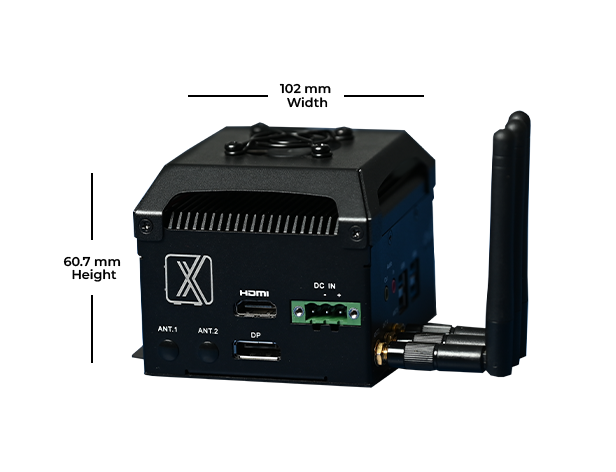For Professionals, By Professionals

Discover ProX PC for best custom-built PCs, powerful workstations, and GPU servers in India. Perfect for creators, professionals, and businesses. Shop now!
SERVICES
WE ACCEPT










Contents
Artificial Intelligence (AI) vision technology requires the use of highly efficient yet powerful AI hardware. Recently, Intel AI Builders and viso.ai worked together to leverage technologies in a power-constrained environment using the Movidius Vision Processing Unit (VPU).
viso.ai is part of the Intel AI Builders Program to accelerate the development of computer vision solutions for business challenges.
Scale Intel VPU Technology with viso.ai
Movidius VPUs enable computer vision and on-device edge AI workloads at very high efficiency (cost-to-performance). This is achieved by coupling highly parallel programmable computing with workload-specific AI hardware acceleration. VPU technology enables cameras, edge devices (servers), and AI inference with deep neural networks and computer vision-based applications.
Viso Suite infrastructure allows for easy integration and scaling of VPU technologies with on-device AI inference applications.
The case runs on Intel Core i3 processors, combined with the Intel Neural Compute Stick 2 and Movidius Myriad X VPU for Deep Learning inference, in a robust and industrial housing.
Additionally, the Deep Learning models are optimized using the Intel Distribution of OpenVINO Toolkit. This software kit helps developers and data scientists speed up computer vision workloads, streamline deep learning inference and deployments, and enable execution across different Intel hardware.
Read about the joint case study published by Intel AI Builders and viso.ai.
On-Device Deep Learning Inference
The featured solution is based on Edge Computing devices that are mounted inside delivery vehicles. The Movidius Myriad X VPU provides enough power to perform object detection on three input camera streams in real time at low electrical power consumption. The output warns the driver about potential obstacles. In addition, the Intel Core i3 processor performs geometrical transformation tasks to display the live video streams to the driver inside the delivery van.
Intel AI Builders point out how using the latest, optimized Intel AI technologies has resulted in significant direct cost reduction. This is according to initial KPI assessments after the first month of system usage. Furthermore, viso.ai confirms that it will integrate further features into the same system to scale enterprise benefits.
According to Arkadiusz Hruszowiec, Intel Business Development Regional Manager, “this project is a proof-point that our strategy of enabling AI on edge devices works in practice. By using the Intel Distribution of OpenVINO toolkit and Intel Vision Accelerator Solutions, viso.ai can take video streams, analyze them in a deep-learning model, and draw insights in real time at the edge. This results in real business impact for the end customer.”
What’s Next?
Computer vision is an imperative aspect of companies using AI software today. If you enjoyed this article, we suggest you read the more articles.
Related Products


Share this: